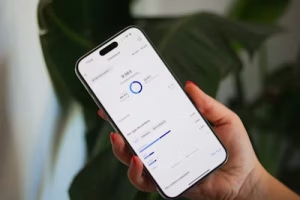Creator Economy Trends Instagram Revenue Streams
Every day you open Instagram, someone’s announcing a new brand deal, product launch, or six-figure milestone. Meanwhile, you’re still grinding out content and wondering, “What am I missing?”
You’re not alone. The creator economy is exploding, but so is the competition. What worked three years ago — sponsored posts and viral Reels — isn’t enough anymore. Today’s creators need strategy, systems, and multiple income streams to survive algorithm changes and build long-term wealth.
So let’s break down the most powerful creator economy trends and the Instagram revenue streams that can help you earn more consistently in 2025 — with real-world insights, examples, and data-backed advice.
The State of the Creator Economy in 2025
The creator economy isn’t just a buzzword anymore — it’s an industry worth over $250 billion, projected to exceed $480 billion by 2027, according to Goldman Sachs.
Yet here’s the twist: most of that money goes to the top 1% of creators. According to Influencer Marketing Hub, over half of all creators make less than $15,000 a year. The reality is clear — to succeed, you need to think like a business, not just a content machine.
Let’s explore what’s shaping the space this year.
1. Trend: Income Diversification is No Longer Optional
Gone are the days of relying solely on brand deals. The new wave of creators is building multi-stream ecosystems combining:
- Brand partnerships
- Affiliate and product sales
- Paid communities or memberships
- Courses, e-books, and coaching
- Merchandise or print-on-demand drops
- Platform revenue shares (Reels Ads, Live Badges)
As Forbes reports, successful creators are treating content as their top-of-funnel — not the final product. Their real money comes from products, subscriptions, or audience-owned assets beyond social media.
So, if you’re relying on one income source, it’s time to diversify.

2. Trend: Micro and Niche Creators Are Taking Over
Brands are shifting focus from mega-influencers to micro (10k–100k) and nano (<10k) creators. Why? Engagement rates are higher, and audiences trust smaller creators more.
According to Hootsuite’s Social Trends Report, micro-influencers are 60% more effective at driving purchase intent than large influencers. That means a small, engaged audience can outperform a million-follower page if you’ve built trust.
If you’re just starting, this is your advantage — focus on a niche, build genuine community, and you can still win big.
3. Trend: Platforms Are Fighting to Pay You More
Meta, YouTube, and TikTok are all competing to become the most creator-friendly platform. Instagram has rolled out monetization features like:
- Reels Ads revenue share
- Instagram Subscriptions (exclusive posts & stories)
- Live Badges and Stars
- Affiliate Tools and Shop integrations
According to TechCrunch, Instagram is doubling its investment in creator monetization tools to keep creators loyal amid competition from TikTok and YouTube Shorts.
If you’re already active on Instagram, this is your window of opportunity — the platform wants you to make money because it keeps you posting.
4. Trend: AI and Automation are Supercharging Solo Creators
You no longer need a big team to operate like one. With AI tools for editing, caption writing, analytics, and UGC aggregation, even solo creators can scale efficiently.
Platforms like Lunavistahub make this easier by helping brands and creators collect, curate, and repurpose user-generated content across 15+ platforms using AI. This kind of automation saves hours and boosts engagement while turning fan content into powerful marketing assets.
In short: creators who use AI strategically will have a massive edge.
Instagram Revenue Streams You Should Be Building in 2025
Let’s zoom into what actually puts money in your account.
1. Sponsored Content & Brand Partnerships
Still the biggest earner for most creators — sponsored posts, Reels, or stories where you promote products you genuinely use.
Tips for success:
- Focus on long-term partnerships, not one-offs.
- Create a media kit showing engagement metrics.
- Use storytelling — show, don’t sell.
- Negotiate for content rights and exclusivity fees.
Example: A skincare creator with 40k followers might earn ₹20,000–₹50,000 per Reel. But the real goldmine? Becoming an ongoing brand ambassador.
2. Instagram Reels Ad Revenue Sharing
Instagram now shares ad revenue from Reels views with eligible creators.
You can earn roughly $0.50–$3 per 1,000 views, depending on region and engagement. Not life-changing — but scalable.
To maximize:
- Keep Reels under 30 seconds.
- Hook viewers in the first 3 seconds.
- Use trending sounds early.
- Focus on retention rate and shareability.
Even if payouts seem small, consistent Reels views can compound over time — like a mini “content dividend.”
If you’re struggling to create scroll-stopping Reels, check this guide on making Instagram carousel posts that stop the scroll — it’ll help you understand visual storytelling techniques that also boost engagement.
3. Live Badges & Stars (Fan Donations)
Fans can buy badges during your Instagram Lives to support you.
It’s great for creators who thrive in real-time interactions — fitness, art, coaching, or music.
Pro tip: Host a weekly “Live Q&A” or “Behind-the-Scenes” stream. Offer shoutouts to badge buyers or exclusive post-live perks.
Average badges range from $1–$5 — but with 100 loyal viewers, that can easily add up each session.
4. Instagram Subscriptions & Close Friends Monetization
Creators can charge between $0.99 and $99/month for exclusive content like private stories, reels, and direct messages.
This builds recurring income — the holy grail of creator sustainability.
What to offer subscribers:
- Weekly behind-the-scenes content
- Exclusive tips or Q&A sessions
- Monthly live chats
- Early access to new drops
Keep it valuable and community-driven. Think of it as your “inner circle.” If you’re building a community and want engagement ideas, try this guide on creating Instagram Story polls that engage audiences for inspiration.
5. Affiliate Marketing
Earn a commission every time someone buys a product using your link or code.
Fashion, beauty, tech, and lifestyle creators can do this easily.
Tools to use:
- Instagram’s built-in Affiliate Shop
- Amazon Associates
- Impact Radius
- ShareASale
Combine affiliate links with how-to content or tutorials. It feels authentic and provides value.
6. Digital Products, Courses & Coaching
Creators who teach what they know are killing it. Whether it’s a short e-book, Notion template, or 2-hour workshop — digital products offer infinite scalability.
Example:
A fitness creator can sell a ₹799 “Home Workout Guide” and make ₹80,000 from just 100 buyers — all without brand dependency.
Platforms like Gumroad, Teachable, or Podia make setup easy.
7. Merchandise & Print-on-Demand
Selling branded merchandise builds community identity and adds personality to your brand.
Use tools like Printful, Redbubble, or Shopify Collabs to manage inventory and shipping automatically.
Start small with hoodies, mugs, or tote bags.
Make them meaningful, not just logo spam — think slogans, art, or phrases your audience loves.
8. Consulting, Freelancing, or UGC for Brands
Not all monetization has to be public. Many creators get paid behind the scenes to:
- Produce UGC (User-Generated Content) for brand ads
- Script or design campaigns for companies
- Offer 1-on-1 consulting sessions
According to HubSpot’s 2025 Creator Economy Report, UGC creation is one of the fastest-growing income sources, especially for creators under 30.
If you’re already making great content, you can easily repurpose that skill for B2B income — and tools like Lunavistahub help you manage and license your UGC professionally.
The Smart Creator’s Strategy for 2025
Building multiple income streams sounds overwhelming — but it’s easier with structure.
Step 1: Audit Your Strengths
Ask: What do I enjoy creating most? What gets me DMs or saves? Start from your strengths, not trends.
Step 2: Pick 2–3 Revenue Streams to Test
You don’t need all eight. Start with what’s feasible — maybe sponsored content + affiliate + digital guide.
Step 3: Plan a 90-Day Monetization Sprint
Break it into monthly goals:
- Month 1: Optimize Reels & test affiliate links
- Month 2: Create your first digital product
- Month 3: Launch Instagram subscription or membership
Step 4: Automate & Analyze
Use scheduling tools, analytics dashboards, and AI caption writers to free up time for creativity.
Step 5: Protect Your Brand
Have contracts, set boundaries, and maintain authenticity. The second you lose trust, your revenue collapses.
Challenges You’ll Face (and How to Overcome Them)
| Challenge | Solution |
| Algorithm changes | Diversify to other platforms; build an email list. |
| Brand fatigue | Limit sponsored posts; keep organic content 70%. |
| Burnout | Batch-create, automate posting, take rest days. |
| Platform dependence | Own your audience (email, community, or product). |
Remember: The most powerful asset in 2025 is your community, not your follower count.
Future Predictions: Where Instagram is Heading
- AI-Assisted Creation: Instagram’s AI caption and post generators will become mainstream.
- Creator Collectives: Groups of small creators teaming up to pitch brands jointly.
- Cross-Platform Monetization: Instagram, YouTube Shorts, and TikTok creators merging income dashboards.
- Long-Form Expansion: Reels evolving to 2–3 minute formats for deeper storytelling.
The future favors creators who adapt fast and build ecosystems around their audiences — not just followers.

Final Takeaway: The New Creator Mindset
The creator economy is bigger than ever — but also more complex.
Success now depends on how strategically you diversify and how authentically you connect.
Instagram gives you more tools than ever: Reels ads, badges, subscriptions, and affiliate programs. But remember — these are just channels. You are the brand.
So in the next 30 days:
- Pick 2 new monetization streams
- Test and analyze
- Automate what you can
- Focus on community, not vanity metrics
Because the future of the creator economy doesn’t belong to the biggest — it belongs to the most adaptable.
FAQs
1. Do I need 10k followers to start monetizing on Instagram?
No — many creators start earning with under 5k followers using affiliate links, UGC, or micro-brand deals.
2. What’s the best Instagram monetization method for beginners?
Start with affiliate marketing and UGC creation — low setup, high flexibility.
3. How do I get brands to notice me?
Engage in their posts, tag them authentically, and send personalized pitches with data (reach, engagement, conversions).
4. Is it okay to mix multiple revenue streams?
Yes — the most successful creators have at least 3. It protects you from income dips.
5. What tools help creators manage everything?
Use AI assistants, analytics dashboards, and aggregation platforms like Lunavistahub to streamline content and performance.
6. Do I need to disclose paid posts?
Absolutely. Always use #ad or #sponsored — transparency builds trust and keeps you legally safe.
7. What’s a good engagement rate for brand deals?
Between 2–5% is solid for Instagram. Micro-creators often see 7–10%, which brands love.
8. Can I still grow in 2025 without Reels?
Reels dominate discovery, but carousels, stories, and collaborations still matter. Diversify formats.
9. How do I price brand collaborations?
Start with your engagement × niche value × deliverables. Use Influencer Marketing Hub’s pricing calculator to estimate fair rates.
10. How can I turn followers into customers?
Provide consistent value, build an email list, and use story-based selling — not hard pitches.

